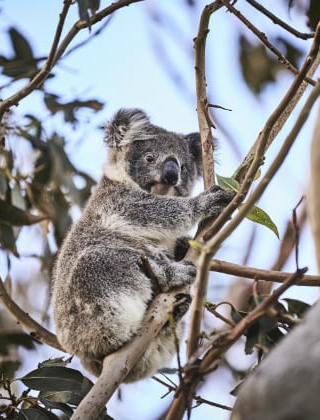Pollinators creating a buzz for productivity and biodiversity

Maintaining an abundance and diversity of pollinating insects can benefit a variety of sheep grazing systems including native pastures, fodder crops, and nitrogen-fixing pasture legumes such as clover.
In Australia, pollinators such as honey bees, native bees, and other native insects like hoverflies, wasps and butterflies are an essential component of agricultural production and of healthy, biodiverse landscapes.
Pollination by insects benefits pasture, fodder crops, and shelterbelts as well as food crops, and crops grown for seed production (e.g. canola). Protecting and enhancing pollinator resources on-farm will therefore help support the sustainability and productivity of sheep grazing enterprises. It is a win-win situation: pollinators help woolgrowers, if woolgrowers support pollinators.
While over-grazing of pastures can have a negative impact on pollinator populations, well-managed grazing can support pollinators. For example, the strategic resting of pasture during rotational grazing can enhance flowering, growth and survival of plant species, which can benefit invertebrate and pollinator biodiversity.
In addition, the disturbance to the ground from periodic grazing by livestock can provide nesting opportunities for solitary, ground-nesting bees. This was proved by a recent Montana State University study of pollinator response to livestock grazing in the rangelands of Montana, which found that bees were 2–3 times more prevalent on grazed land than ungrazed land.
About 70% of Australia’s bees are ground-nesting bees. Most other bees in Australia are solitary bees that nest in pre-existing cavities such as between tree bark. Australia is home to about 1,700 species of native bee, but few of these are colony-forming bees.
A diverse and healthy community of pollinators generally provides more effective and stable pollination than relying on any single species.
Encouraging pollinators on your property
The Australian National University’s Sustainable Farms initiative and the Wheen Bee Foundation has provided a handy guide to encouraging pollinators in farming landscapes.
Create pollination reservoirs
Pollination reservoirs are areas of native plant species that provide floral resources for pollinators. They can be new plantings or existing habitat. New plantings can be trees, shrubs and ground cover. Use a combination of direct seed sowing and planting tube stock to establish new vegetation. New trees and shrubs can also be useful as shelterbelts. Initial watering and protection from grazing will improve the success rate of young plants. Protect and improve existing habitat where possible. Roadsides, shelterbelts, dam margins, woodlands, grasslands, rocky areas and river and creek edges can all be important pollinator-attracting areas, bringing valuable pollination services to your farm.
Reduce chemical use where possible
Insecticides, fungicides, and herbicides all affect pollinator health. Herbicides can impact pollinators by reducing the availability and diversity of flora. Insecticides are an obvious threat to pollinators. When chemical pest control is unavoidable, select products that are least harmful for pollinators and consider applying insecticides when pollinators are less active, for example in the evening.
Plant according to habitat type and prepare for change
When establishing pollinator habitat, consider including species that are indigenous to your area but can tolerate increasingly drier and warmer conditions, to create resilient habitat for the future under climate change. Rehabilitate weedy areas into managed pollination reservoirs by introducing higher native plant diversity. Be careful not to plant invasive or listed weeds.
Amplify the flower signal
Plants have evolved large flowers or clusters of smaller flowers because they attract more pollinator visits. Large, colourful and diverse plantings attract more pollinators. Ideally, plant in groups that use all the vegetation layers possible such as a species-rich mixture of forbs, ground covers, shrubs, and trees.
Utilise ecotones
Ecotones are the margins between two different habitats. Ecotones often contain a more diverse mixture of species because they are used by species from both habitats. Protect and utilise ecotones such as the transition zones between woodland and grassland, or wetland and grassland to create highly diverse floral and insect communities.
Get to know your local bush
Each farm and region will have distinct populations of insects, based on the plants and climate. Identifying and understanding the insects in your area will help you develop better plantings. The plants growing in nearby bush will be well suited to the climate and soils in your region.
Double the crop value
Plants that are pollinator-attracting are sometimes crop species in their own right and can be used to diversify farm production. Bush foods such as desert limes, bush tomato, yam daisy and many more are in high demand for use in fresh and manufactured products. Native plant seed is needed for revegetation projects. Supporting beekeepers by hosting beehives is an opportunity to increase pollinator numbers on the farm.
More information: www.sustainablefarms.org.au
Top image: Pollinators such as bees can have a productivity benefit as well as a biodiversity benefit in sheep grazing enterprises. PHOTO: Searsie.
This article appeared in the Spring 2025 edition of AWI’s Beyond the Bale magazine that was published in September 2025. Reproduction of the article is encouraged.















